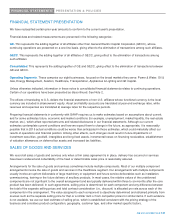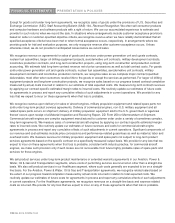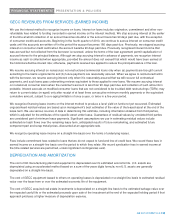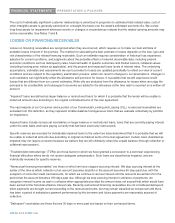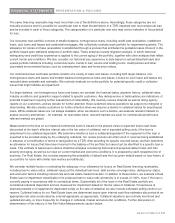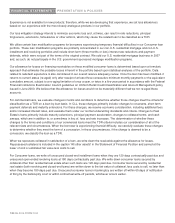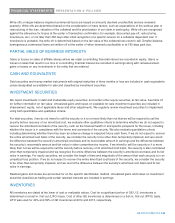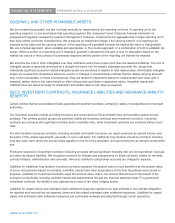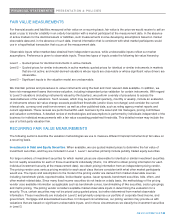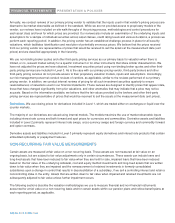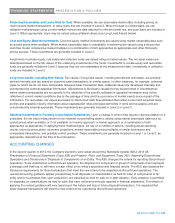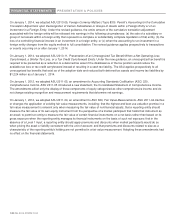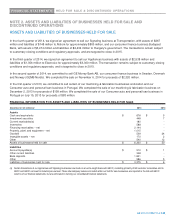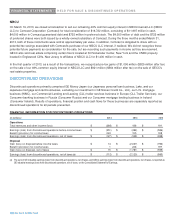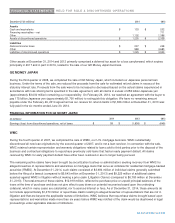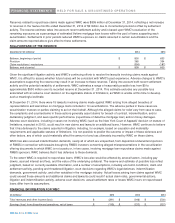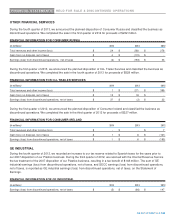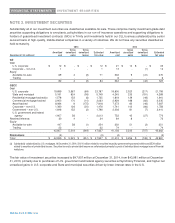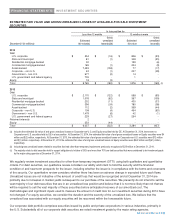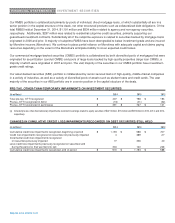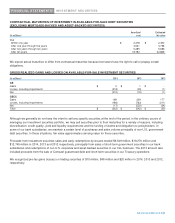GE 2014 Annual Report Download - page 167
Download and view the complete annual report
Please find page 167 of the 2014 GE annual report below. You can navigate through the pages in the report by either clicking on the pages listed below, or by using the keyword search tool below to find specific information within the annual report.
GE 2014 FORM 10-K 147
FINANCIAL STATEMENTS PRESENTATION & POLICIES
Financing Receivables and Loans Held for Sale. When available, we use observable market data, including pricing on
recent closed market transactions, to value loans that are included in Level 2. When this data is unobservable, we use
valuation methodologies using current market interest rate data adjusted for inherent credit risk, and such loans are included in
Level 3. When appropriate, loans may be valued using collateral values (see Long-Lived Assets below).
Cost and Equity Method Investments. Cost and equity method investments are valued using market observable data such
as quoted prices when available. When market observable data is unavailable, investments are valued using a discounted
cash flow model, comparative market multiples or a combination of both approaches as appropriate and other third-party
pricing sources. These investments are generally included in Level 3.
Investments in private equity, real estate and collective funds are valued using net asset values. The net asset values are
determined based on the fair values of the underlying investments in the funds. Investments in private equity and real estate
funds are generally included in Level 3 because they are not redeemable at the measurement date. Investments in collective
funds are included in Level 2.
Long-lived Assets, including Real Estate. Fair values of long-lived assets, including aircraft and real estate, are primarily
derived internally and are based on observed sales transactions for similar assets. In other instances, for example, collateral
types for which we do not have comparable observed sales transaction data, collateral values are developed internally and
corroborated by external appraisal information. Adjustments to third-party valuations may be performed in circumstances
where market comparables are not specific to the attributes of the specific collateral or appraisal information may not be
reflective of current market conditions due to the passage of time and the occurrence of market events since receipt of the
information. For real estate, fair values are based on discounted cash flow estimates that reflect current and projected lease
profiles and available industry information about capitalization rates and expected trends in rents and occupancy and are
corroborated by external appraisals. These investments are generally included in Level 2 or Level 3.
Retained Investments in Formerly Consolidated Subsidiaries. Upon a change in control that results in deconsolidation of a
subsidiary, the fair value measurement of our retained noncontrolling stake is valued using market observable data such as
quoted prices when available, or if not available, an income approach, a market approach, or a combination of both
approaches as appropriate. In applying these methodologies, we rely on a number of factors, including actual operating
results, future business plans, economic projections, market observable pricing multiples of similar businesses and
comparable transactions, and possible control premium. These investments are generally included in Level 1 or Level 3, as
appropriate, determined at the time of the transaction.
ACCOUNTING CHANGES
In the second quarter of 2014, the Company elected to early adopt Accounting Standards Update (ASU) 2014-08,
Presentation of Financial Statements (Topic 205) and Property, Plant, and Equipment (Topic 360): Reporting Discontinued
Operations and Disclosures of Disposals of Components of an Entity. This ASU changes the criteria for reporting discontinued
operations. To be classified as a discontinued operation, the disposal of a component or group of components must represent
a strategic shift that has, or will have, a major effect on an entity’s operations and financial results. The ASU also expands the
disclosure requirements for those transactions that meet the new criteria to be classified as discontinued operations. The
revised accounting guidance applies prospectively to all disposals (or classifications as held for sale) of components of an
entity and for businesses that, upon acquisition, are classified as held for sale on or after adoption. Early adoption is permitted
for disposals (or classifications as held for sale) that have not been previously reported in financial statements. The effects of
applying the revised guidance will vary based upon the nature and size of future disposal transactions. It is expected that
fewer disposal transactions will meet the new criteria to be reported as discontinued operations.


